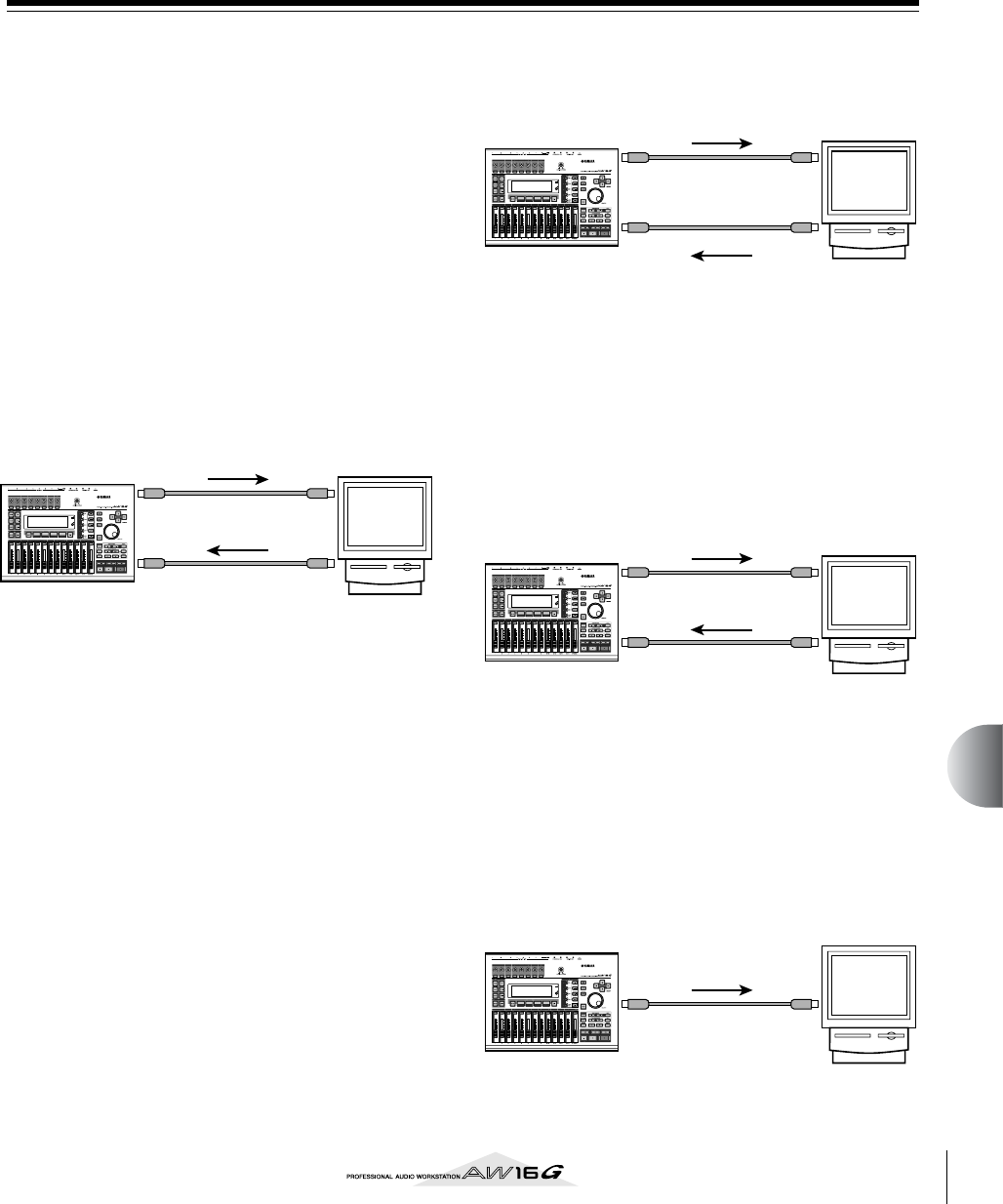
149
Chapter 14
MIDI and utility functions
This chapter explains basic MIDI-related settings, functions that use
MIDI, and various utility functions.
What you can do using MIDI
On the AW16G, you can use MIDI to do the following
things.
● Synchronize operation with an external device
You can synchronize an AW16G song with the play-
back of an external device (such as a MIDI
sequencer) by exchanging synchronization messages
such as MTC (MIDI Time Code) or MIDI Clock with
the external device.
● Remote control of the transport
You can transmit MMC (MIDI Machine Control) mes-
sages from a MIDI sequencer or other external MIDI
device to the AW16G to remotely control the
AW16G’s transport. Conversely, you can also trans-
mit MMC from the AW16G to an external device to
control its transport.
Example of using MTC/MMC to synchronize the
operation of the AW16G and a MIDI sequencer
(computer)
● Automate scene changes and mix parameter opera-
tions
When you recall a scene on the AW16G or operate
its mix parameters, the corresponding messages (pro-
gram changes or control changes) can be transmitted
from the MIDI OUT/THRU connector to an external
device.
If you record these messages on a MIDI sequencer
that is synchronized to the AW16G song, these scene
recall operations or realtime mix parameter opera-
tions can be reproduced whenever you want.
Example of recording/playing scene selections and
mix parameter operations on a MIDI sequencer
(computer)
● Bulk dump
The AW16G’s internal settings such as library data
and scene memories can be transmitted as “bulk
data” and recorded on a MIDI sequencer or other
external MIDI device. The recorded bulk data can
then be transmitted to the AW16G to restore its inter-
nal settings to their previous state. This can also be
used to copy settings between two AW16G units.
Example of recording/playing bulk data on a MIDI
sequencer (computer)
● MIDI Remote
“MIDI Remote” is a function that lets you use the
AW16G as a physical controller for an external
device. You can assign the desired MIDI messages to
the faders and [TRACK SEL] keys of the top panel,
and use them to remotely control a MIDI device or
computer program.
Example of using the AW16G as a physical control-
ler for a MIDI sound module
AW16G
External MIDI device
(e.g., computer)
MIDI OUT/THRU
connector
MIDI IN connector
MIDI IN
MIDI OUT
MTC
MMC
AW16G
Control changes
Program changes
MIDI IN
MIDI OUT
Control changes
Program changes
External MIDI device
(e.g., computer)
MIDI IN connector
MIDI OUT/THRU
connector
AW16G
Bulk data
MIDI IN
MIDI OUT
Bulk data
External MIDI device
(e.g., computer)
MIDI IN connector
MIDI OUT/THRU
connector
AW16G
Control changes
System exclusive
messages, etc.
MIDI IN
External MIDI device
(e.g., computer)
MIDI OUT/THRU
connector


















